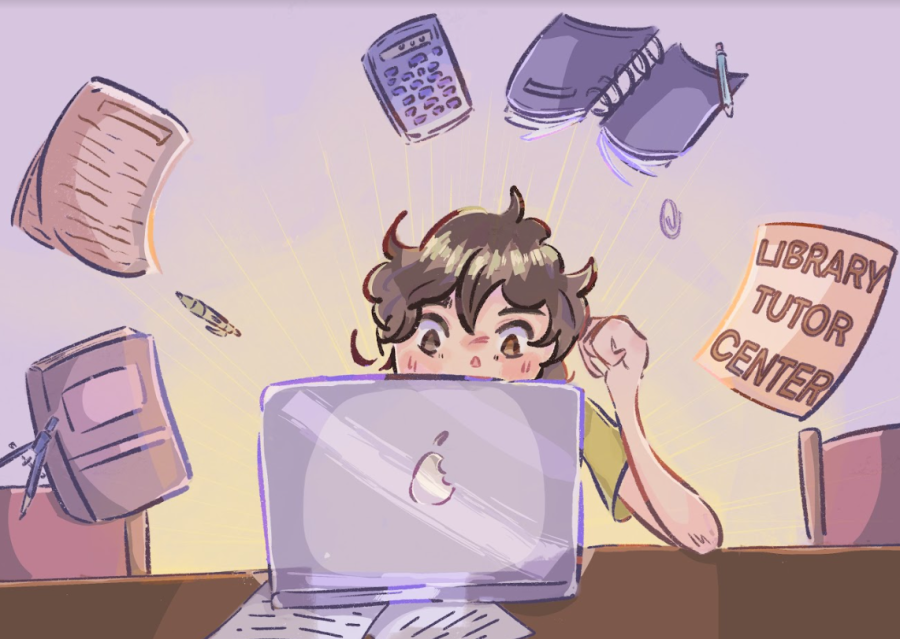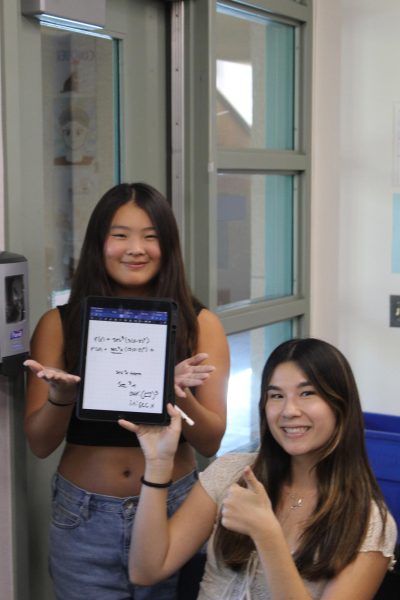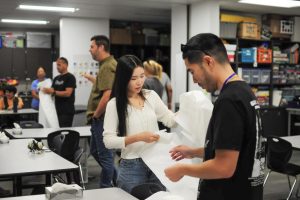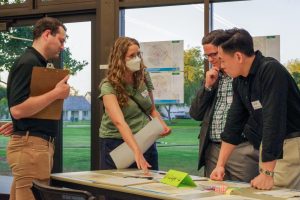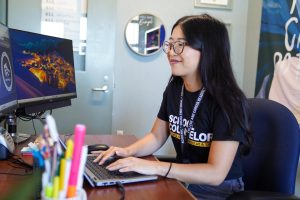Student tutors can help us make the best of every tutorial
TALK TO ME: An extra pair of hands means more students’ academic needs are met during tutorial.
November 21, 2022
It is no secret that Northwood is academically challenging, and Northwood offers support systems to help that. Teacher Advisements hold fall conferences to stay up to date with students’ mental wellbeing at school and tutorials, the Tutor Center and teachers act as academic resources. Many arrangements are made specifically for students’ success, yet flaws still exist in Northwood’s academic support resources that should be addressed.
Tutorial is a prime example of an area where academic resources could be better implemented. Courses with higher levels of academic rigor or steep learning curves, such as APs, have proportionally more students that need help than teachers available. Due to this, students’ individual needs are either generalized with other students’ or time runs out before a teacher can help them.
“I can usually get my work done during tutorial, except for when I have to go to those classes that are somehow always full,” freshman Hannah Davidson said. “The teacher can never get to all the students, meaning I either get a super brief explanation or waste my entire tutorial waiting for help that doesn’t arrive. I don’t have time after school to get that work I need help on done, so it’s frustrating when I have to go back and wait for another tutorial.”
Teachers are equally as frustrated as students. According to U.S. News, Northwood’s student to teacher ratio is 25:1. When surges of students pack the classrooms of teachers with several periods and different course levels, teachers are forced to juggle a full class in almost a third of the time in a normal period.
“I am so thankful that so many students come to my tutorial and I admire that they care enough to get that extra help,” English teacher Sara Katlen said. “But my frustration lies in that when 30 plus students show up and there’s only 35 minutes in tutorial, there is no way I can give them the individualized instruction that they deserve and want.”
However, lengthening tutorial should not be the solution as it would remove time from actual class periods. Instead, Northwood can improve tutorial by bringing in teacher assistants or student teachers, or it could also utilize another established Northwood academic resource: student tutors in the Tutor Center.
In the Tutor Center, currently only offered during seventh and eighth period, experienced students pass down a uniquely student perspective on learning that teachers often overlook. This benefit is completely inaccessible to students who take a full course load, are enrolled in sports, or have other commitments after school.
“I never have time to go to the library and the Tutor Center after school,” junior Genevieve Chomin said. “During the spring and fall I have sports during my seventh and eighth periods and I can’t just skip practice to go.”
Implementing student tutors during tutorial in addition to the Tutor Center will help these students—who are the most susceptible to falling behind due to their increased work loads—within the typical bell schedule and allow them to be efficient with their limited time.
Teachers anticipating a surge in students attending their tutorial could also sign up for a student tutor to come to their room, allowing for more students’ needs to be met with an extra pair of hands. As student tutors at the Tutor Center are given class credit, tutorial tutors could be given volunteer hours, extra credit or be designated a service-to-school club.
Just as student tutors for the Tutor Center are selected based on teacher recommendations, so would tutorial student tutors. Tutor Center coordinator Bailey Phenicie reports that students have been satisfied with the Tutor Center and consistently return for more help, so continuing this practice will lead to similar results.
Northwood is constantly trying to improve itself as a school through increased emphasis on mental health. However, a healthy relationship with academics should not only be addressed through counseling, but also at the root: academics. Northwood cannot fight a fire by just dousing the edges of the flame; they must thoroughly put out every spark.



















































